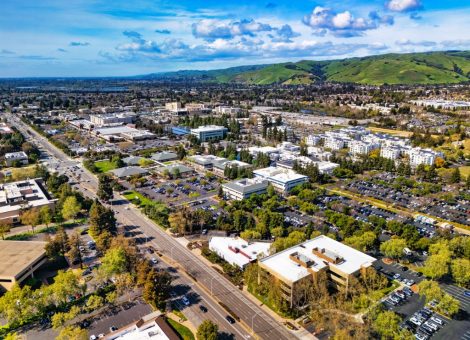A guide to data centralization in retail real estate

In today’s retail and restaurant environments, data is one of the most valuable assets a company can possess. Retailers generate vast amounts of data across multiple channels: e-commerce, brick-and-mortar stores, supply chains, marketing, and customer service. The true power of this data can only be unlocked when it is centralized, integrated, and made accessible across the organization.
However, one often overlooked area where data centralization can deliver significant value is the real estate department. As retailers expand, optimize, or consolidate their physical footprint, centralized data becomes essential for making informed, agile, and profitable decisions.
In this blog, we will present a high-level summary of the common data that retail real estate departments need access to along with the insights they can gain from the data. Future blogs will go into detail about best practices that can be applied to each data source.
What is data centralization?
Data centralization is not just a technical upgrade, it’s a strategic imperative that drives efficiency, agility, and customer-centric innovation.
For retail real estate teams, data centralization unifies all key information including store performance, market data, demographics, competition, and site characteristics into a single, reliable source of truth.
With everything in one place, teams can make faster, more accurate location decisions, reduce duplication and errors, improve collaboration across departments, and respond quickly to changing market conditions. For U.S. retailers managing large portfolios across diverse regions, centralized data ensures consistency, strengthens forecasting, and ultimately leads to smarter, more profitable expansion strategies.
What is data centralization comprised of?
Data centralization brings all business information, such as performance metrics, market data, customer insights, and site details, into one unified, accessible system.
Data centralization typically involves:
1. Your physical store data
This data is often stored in databases or online systems that are owned by the real estate department. Common types of data include:
- Store location
- Open date
- Store format
- Lease information (e.g. rent amount, restrictions, exit clauses)
- Parking
- Signage
- Visability
- Site plans
- Store planogram
Most of this data is rather straightforward. However, many real estate departments do not have data regarding the number of parking spots, site visibility, and quality of signage since this data is hard to obtain and typically needs to be collected onsite when employees are visiting the market.
When captured, this data makes great input into a sales forecasting model or can be used to help explain gaps between a sale forecast and the actual store performance.
2. Competitor locations and attributes
This data is typically owned by real estate and includes the locations and characteristics of competitor stores. Depending on the type of retail, third-party databases are available that range from relatively simple web scraping-based data (location information, chain name, approximate opening date) to very complex (square feet, number of checkout registers, estimated total sales, estimated sales by department.)
When working with third-party store databases, make sure you understand the update frequency along with methodologies used to capture or estimate more advanced fields. No matter the third-party dataset, the odds are that you will need to supplement with first-party data captured by your employees when they are in the field.
3. Demographics
Demographic data is often stored in databases or online systems that are owned by the real estate department. Demographics is a broad term that refers to the characteristics of human populations. The type of specialized demographic databases often used in real estate include:
- General demographics: Census-based databases that contain the count of residential population along with their attributes. These databases typically include data for multiple time periods, such as 2020 census counts, current year estimates, and year-5 projections that form the backbone of classic real estate research.
- Workplace demographics: This family of databases estimates the number of businesses by business type operating in a geographic area. This data is a subset of daytime population.
- Daytime population: This refers to the number of people within a geographic area during normal business hours. The analysis of this data is of critical importance to retail concepts such as restaurants that need to understand the potential for strong midday business.
- Lifestyle segmentation: Categorizes individuals/households into distinct groups based on behaviors, interests, attitudes, life stage, wealth, values, daily activities, and other demographic attributes. It is used in real estate to easily understand the characteristics of an area to ensure it contains enough of your core customer.
- Supply and demand: A dataset used to estimate the potential demand in a geographic area for various retail categories compared to the estimated dollar sales by retail category for businesses operating in the geographic area.
- Seasonal population: Data relating to the number of people who temporarily reside in or visit a geographic unit during specific seasons of the year. The classic example is retirees who flock to Florida in the wintertime. If you are researching areas that are highly seasonal, you should add this type of data to your tool belt.
4. Store operational data
This data is not owned by real estate and typically includes, at a minimum, the following items:
- Store sales
- Store surveys
It is recommended that you build automated data feeds for your store sales data. This data should be updated on a weekly basis and should include overall store sales along with sales by department. It is also suggested that you maintain a history of all this data so it can be quickly accessed during ad-hoc projects.
Not all retailers conduct ongoing store or customer intercept surveys. If your organization conducts these surveys, it is worth the time to gain access to this data. These surveys typically ask customers to quantify items such as store cleanliness and other data items related to the shopability of the premises.
While this data is not included in sales forecasting models, it is extremely valuable when analyzing the differences between a model prediction and actual store performance. The quality of a store manager can often impact store performance by 20 percent or more.
5. Customer loyalty data
Customer loyalty data is not owned by real estate and is often the largest, and most guarded, database maintained by any retailer. While this data is often tightly protected, it is non-negotiable that you gain access to it as it contains a treasure trove of insight that can guide your real estate strategy. At a minimum, you need the following summarized data items:
- Customer ID
- Store ID
- Home address or long/lat of customer
- Expenditure by customer at store
A future blog will go into detail on the insights that can be gained from an analysis of this data, but even at a basic level it allows you to conduct a lifestyle segmentation analysis – helping you identify where your primary and secondary customers live, and which consumer groups are not currently engaging with your brand. This data will also allow you to create trade areas for each of your stores and is extremely valuable when researching infill opportunities in existing markets.
At Kalibrate, we are often asked if loyalty data is still necessary when a retailer has access to Massive Mobile Data (MMD). While MMD data does a good job at understanding store trade areas and customers’ cross-shop patterns, it does not reveal if there was an actual transaction and thus cannot be used to understand expenditure potential.
Third-party credit card data is still very complex to work with and requires a data guru and a very large budget. If your company has a loyalty program, you should be using that for understanding your stores and use MMD to understand your competitors, their trade areas, and customers.
6. Massive Mobile Data
This data, also called foot traffic data, is often stored in databases or online systems that are owned by the real estate department and refers to large scale, anonymized information about the movement patterns of people, typically collected from mobile devices. From a real estate perspective, this data can be used to understand the trade areas of existing stores. It is also extremely useful at understanding the cross-shop between various locations.
When working with MMD data, remember that we only know the phone was within the store’s geofence. We do not know if there was an actual transaction and therefore have no idea on transaction size. Thus, visit count data does not always translate cleanly to sales.
In addition, a phone’s daytime and night-time resting locations (i.e. home and work location) are modeled and are non-exact. This can impact the ability to accurately attach household-based demographic information to the device. Lastly, two states (Maryland and Oregon) have recently enacted legislation that has a strong impact on this data, which has caused several MMD providers to no longer provide data in those states.
The future of retail real estate starts with data centralization
To conclude, centralizing data gives retail and restaurant brands a complete view of their customers, stores, and competitors in one place. When data is stored across different systems, it becomes difficult to connect the dots and make informed decisions.
By bringing all data together, real estate teams can better understand store performance, identify new opportunities, and respond quickly to market changes. A single, centralized data source helps every department work from the same information, leading to smarter growth and more efficient operations.
Does your business need effective data centralization?
The amount of internal and third-party data retailers handle can be overwhelming. If you need help with data centralization, get in touch with Kalibrate today.
Read more articles about:
Location intelligenceSubscribe and get the latest updates
You may unsubscribe from our mailing list at any time. To understand how and why we process your data, please see our Privacy & Cookies Policy
Related posts
Location intelligence
Forman Mills accelerates growth with the Kalibrate Location Intelligence platform
The value apparel and home goods retailer selects Kalibrate to to support its national expansion strategy.

Location intelligence
The Kalibrate news round-up: November 2025
In this monthly feature, we look across the industry and mainstream news to uncover stories of note that we think are...


